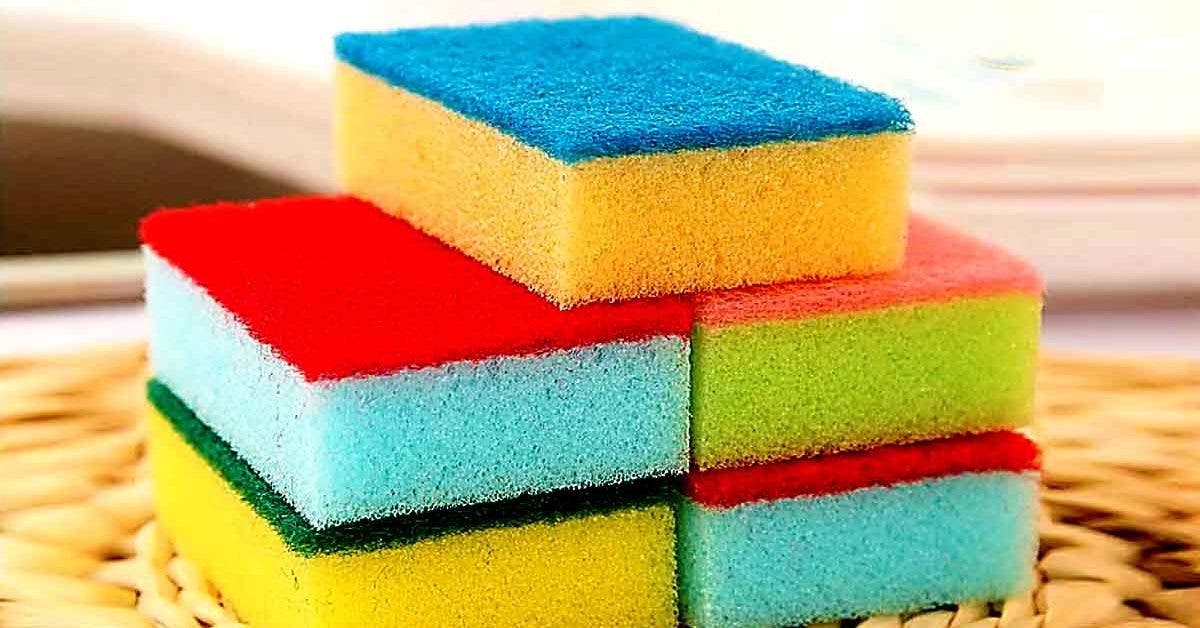You have probably already noticed that dishwashing sponges have different colors. But there are also sponges with the colored abrasive side that you can find on online sites specializing in cleaning. In reality, the choice of colors on the abrasive side of these sponges is not insignificant. Indeed, each sponge would have a utility according to its color.
Green, yellow, red… These colors are chosen in relation to the characteristics for cleaning your dishes.
Why do dish sponges have different colors?
Nothing like a good sponge for doing the dishes. The main goal when buying a sponge is to find the one that will clean best regardless of its color. It must also be very effective over time so as not to buy new ones every day. The best thing is to find one that combines the two. Nothing complicated, yet there are a variety of sponges and it is sometimes difficult to find the right one. But you will discover today that you can choose your special sponge according to its effectiveness thanks to a very significant color code on its abrasive side. Indeed, sponges do not have flashy colors to look pretty. These colors have real meaning.
The red abrasive side of the sponges has a degreasing role
Sponges usually have two sides. An abrasive side for scouring and a cellulose side which has a high absorption capacity for surface cleaning. It is often the abrasive side that is intended to clean kitchen utensils except for more fragile materials that could be scratched. The degree of the abrasive side of a sponge is different depending on its color. For a red sponge, it will be stiffer than average. You can use it for washing dishes to clean, scrub and degrease utensils with stubborn traces of grease.
The abrasive green side of the sponges washes stubborn stains
This sponge has the hardest abrasive of all sponges. Used with dishwashing liquid, it can clean ground-in dirt, stubborn residue and burnt-on food. On the other hand, it is not recommended to use this sponge to clean enamelware or any other fragile surfaces because it risks scratching them and removing their protection.
The yellow abrasive side of the sponges cleans all fragile kitchen utensils
It is the sponge with the softest abrasive. You can use it to wash all fragile surfaces or clean your crystal glasses for example or your porcelain dishes. It is also ideal for cleaning your fragile glass surfaces that could break or scratch with another sponge.
How to maintain your sponges?
For your sponges to last over time, it is important to take good care of them. After using a sponge, it is important to rinse it well then wring it out and let it dry in a ventilated place on a support that does not retain water. If a sponge stays damp, it is more likely to develop bacteria and bad odors. Wash your sponges at least once a week with white vinegar or baking soda to prevent the proliferation of germs. If you use sponges daily, remember to replace them every two weeks. A sponge is considered dirty after only two days of use.
To preserve your sponges and prevent them from rapidly developing microbes, also remember to use the color code of your sponges to clean each surface. For example, the green sponge for washing the oven plates, the red for cleaning the pans and the yellow sponge for the sink. Above all, remember to change them because a dirty sponge risks dirtying your dishes and transmitting bacteria.


